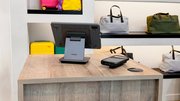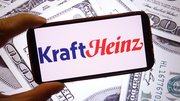Article
Live-assisted sales create new possibilities
New live-assisted technologies from two companies enable more sales, less payroll. Developers say kiosks and interactive digital signs are only the beginning.
June 12, 2006
The author is also editor of www.selfservice.org.
On the surface, it's smart and easy. The idea: integrate streaming video into kiosks to help customers use them much like greeters would. But, for a variety of reasons, the solutions have taken years to develop and are only now breaking the surface.
Now two companies, Experticity and SMART Technologies, offer live-assisted selling devices. The technology creates new possibilities for up-selling, cross-selling and suggested selling. For example, a remote gift registry kiosk consultant can suggest higher-priced merchandise as a client is creating a wish list.
Microsoft showcased partner-company Experticity's LiveSupport on-screen, on-demand service at Retail Systems 2006. The kiosk software incorporates a remote customer-service professional via webcam who can answer questions, print info to the kiosk remotely, or run the kiosk's interface on the customer's behalf.
"The agent can say `O.K., here's the cheapest (gift) but here are some other alternatives,' up-selling in a way an automated system can't do," Experticity founder and chairman D.L. Baron said. "If I'm doing this in a self-service environment, there's very little to influence my choices, whereas in this environment the human can say, `Well, you can register for the cheapest product but here's another in that category.'"
Experticity currently targets big footprint, warehouse-style chain retailers that sell products requiring large amounts of technical knowledge.
|
"There is also great potential for design elements to be injected," Baron said. "If your live, on-screen expert has a designer background, they can then suggest items that would go with that bedroom suite."
The week before Experticity showed the solution in Chicago, SMART Technologies showed Instant Expert there, at the Digital Retailing Expo. The solution incorporates Tandberg and Polycom video conferencing hardware, a large SMART interactive digital sign, Omnivex software, and an audio dome by Brown Innovations that lets the staff on the other side hear the customer's tiniest whisper. SMART director of interactive digital signage Robert Grawet said the solution continually draws interest at tradeshows.
Grawet conceived Instant Expert while reading a Business Week article describing the difficulty Home Depot has with keeping a competent sales staff. In contrast to Experticity's integrated software, which took years to develop, SMART assembled Instant Expert in a couple of weeks, mostly based on available hardware.
"All of the pieces (of Instant Expert) are off-the-shelf," Grawet said. "It's one of those things that, the more I read magazines and about the problems retailers have world-wide, the more evident it is that a solution like this is strong for retailers in-general. They all have similar problems, 107 percent-per-year turnover, things like that. Instant Expert allows them to not have an expert in every aisle all day, every day. They instead can have an expert on a regional basis."
Grawet said SMART's solution can be scaled onto much larger screens than Experticity's, due to the higher quality real-time video and sound transmissions, but is also more expensive.
Given that live-assisted selling devices are new, there are few hard metrics yet to verify their effectiveness, though it does seem to bridge many traditional kiosk gaps. According to Baron, using LiveSupport next to a product can increase its sales from 300 to 400 percent. And according to an Experticity case study, LiveSupport can decrease the need for on-site staff by 17 percent.

While these applications are new, the live-assisted kiosk idea is almost 30 years old.
Banks were first to pipe in professional assistance to ATM customers via video camera, in the 1970s. Now, NCR, Diebold and Wincor have teller assist solutions in which the customer communicates with a remote teller who controls the transaction.
Analyst Francis Duffy has followed the self-service industry since ATMs became widespread. He says live-assisted self-service devices are less worthwhile for intimate, high-touch specialty retailers, where well-trained on-site staff make such a system redundant.
"To cost-effectively run a live Q&A session with an expert requires a certain degree of scale," Duffy said. "Very large chains with high staff turnover and marginally knowledgeable sales personnel stand to benefit the most from running centralized live expert operations because there is a greater chance that demand for the service and resulting sales will justify the costs of installing and operating such systems."
Live-assisted sales software can also extend outside the store. In its current form, deployers can offer LiveSupport for download - meaning customers who use it in-store to buy, for example, materials for a home improvement project, or recipe ingredients, could then download the client to their home computer and have the on-screen expert walk them through the project.
"We see a screen at the end of every aisle, counter and desktop as a channel for liveSupport service," Baron said. "And the eventual destination will be on cell phones and iPods."













